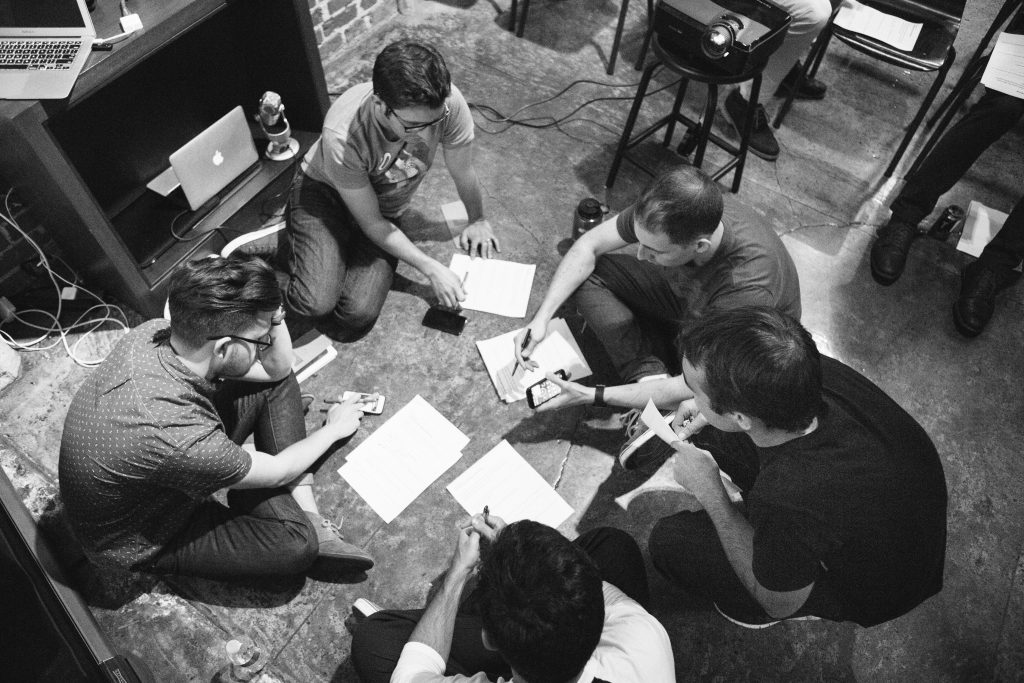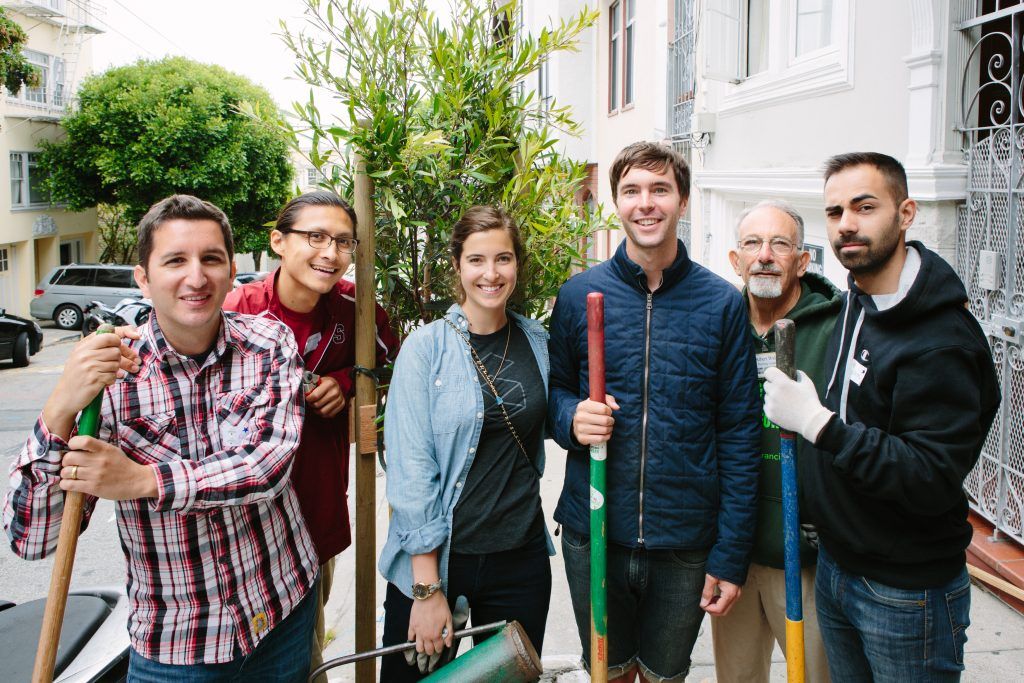Career Spotlight: Ed Lea, Product Designer at Google
Ed Lea’s design career began in the UK in 1999 as a motion graphics designer for Abbey Road. He did award-winning motion graphic work Enhanced CDs (E-CD’s) and DVDs and transitioned to product design roles around 2007, building products at Qype (acquired by Yelp), Tango, and Inkling (through Designer Fund’s Bridge program). Today he’s at a much larger company, where he runs design for Google News. His work spans multiple products, including Google News, the Google Play Newsstand app, and news products in Google Search.
We sat down with Ed to learn about his journey through agencies and startups to a giant tech company. He discusses the skills he cultivated to switch to product design, his design process, and his advice for fending off impostor syndrome in the design community.
How did your mindset change in your transition from an agency-based graphic designer to software product designer?
Ed: I studied graphic design in university, then spent 4 years in the music industry doing motion design for DVDs, E-CD’s and Flash websites, before moving moving to freelance/agency work on mostly Flash projects. We would receive a PRD that charted the DVD’s pre-set user flows and clicks, then just go down the checklist of transitions and animate each one.
There wasn’t much emphasis on creating a good end-user experience and we mostly wanted to make flashy transitions and show off our skills and battle After Effects skills with colleagues. We didn’t need to think much about user flows because DVDs have a finite and relatively small number of clicks and paths to take. In fact, there wasn’t really a notion of “product designer” in my field at the time. If you were a web designer, you were just a graphic designer who happened to do things digitally instead of printing them out.
When I moved into web development and experimented with coding and Flash, I had to start being mindful of user experience. Navigation on the web was complex compared to DVD menus. Websites had many more destinations and many more transitions between them. Suddenly, no PRD could define all the user journeys in detail.
Web designers now needed to prioritize the main user journeys and accommodate them. Still, people could jump between sections you never thought would connect. So rather than making a pre-rendered set of frames for a transition (like on a DVD), we’d make the transitions dynamic once you click between them.

What skills did you need to learn when you moved to contemporary product design?
Ed: The turning point for me was a new perspective on the importance of the end user and the problem space they’re in. I needed to cultivate curiosity and non-craft-based skills to understand user behaviors.
The turning point for me was a new perspective on the importance of the end user and the problem space they’re in. I needed to cultivate curiosity and non-craft-based skills to understand user behaviors.Ed Lea, Product Designer at Google
I tell designers who want to move into product design to start with a grounded curiosity about your industry. Seek to understand all the problems in your space, whether your world is social products, or enterprise products, or something else. Later in your career, you can abstract your process and apply it to an industry you don’t know much about. That’s how you become a product factory.
Do you continue to use your graphic and motion design skillset?
Ed: Motion design in particular has continued to be a useful part of my career, and in the last few years, motion has become a bigger part of product design teams for web and mobile. And design tools are much more motion-based these days, such as prototyping tools that transition from state to state. When you see a designer’s work online, it’s often animated rather than static.
What is your approach when designing products at Google?
Ed: We start with a focused period of foundational research to understand user behaviors and needs, including interviews with consumers and professionals — in my case, the publishing industry. A lot of the time, launching products in Google Search involves understand the content ecosystem just as much as understanding the the user needs you are addressing.
Once we have have a good understanding of the underlying issues we are trying to address, at that point we pull together a product narrative that we present to Search leadership. It’s hard to have an overview of the entire product space, so aligning product thinking with general company direction is an important part of the process.
The product storytelling often goes hand in hand with early usability testing. Prototypes are an excellent way to kill two birds with one stone. I often work in Framer and use real data available via internal API’s. This is another place where the motion work I did early in my career comes in handy and enables me to feel what a product would actually be like to use.
How is this process different at Google versus the startups you’ve designed for?
Ed: It costs $10,000 per pound to send stuff to the Space Station via the space shuttle. Launching a product on Google.com is similar: every kilobyte counts. Everything must be absolutely accounted for with a valuable purpose, otherwise we shouldn’t ship it.
So when you work on products at Google, what ends up happening is that you strip everything away to isolate that core nugget of value you’re trying to deliver. There are many seasoned stakeholders that will look at the work you do throughout the product development process. So you have to be able to stand in front of a room and truly believe your pitch about how big a problem is and how your solution will make people’s lives better.
You have to be able to stand in front of a room and truly believe your pitch about how big a problem is and how your solution will make people’s lives better.
So we don’t put out products quickly compared to startups. At a startup, there’s less cost to try something and you can get all the decision makers in a room to turn around an experiment. You have more liberty to throw stuff at a wall and see what sticks, to use that as a tool to try new things. Launching an experiment on Google Search requires a lot of scrutiny, which is both great, because you work out a lot of the issues through the process, but it’s also frustrating because it can take a long time to start learning.

What’s the most valuable career advice you’d pass along to fellow designers?
Ed: The number one advice is to pick up the phone or email other designers. There are many people to reach out to, ask for advice, and just chat about where you are. Or maybe someone online mentions a new technology they’re using, and you reach out to have a conversation about it. The more connections you make, the more ideas can spark.
The more connections you make, the more ideas can spark.
I spent the first half of my design career in the UK, by myself in my studio, and I would learn by looking at things online. Design community sites had the original intention to post ideas for comments and feedback from other designers. But they turned into places where people show off their most polished stuff.
The design industry can trend in that direction, presenting a very polished face. Everyone seems to know what they’re doing. It creates impostor syndrome, especially if you’re working at a company where everyone looks amazing at their job.
All that fell away after I moved to the US and participated in Designer Fund’s Bridge program, where I found myself in a group of designers that wanted to have frank and open conversations. I appreciated everyone in my session and the way they shared ideas and made themselves vulnerable. This gave me the support of community and connections at a new scale.
That connection was important, so I encourage designers to reach out, collaborate, and share. Then you don’t feel like it’s just you against the world.